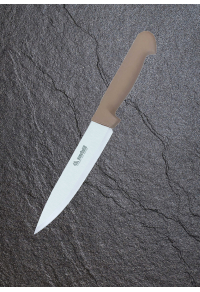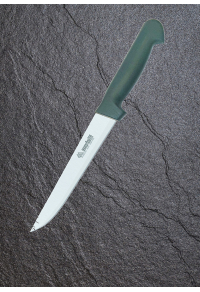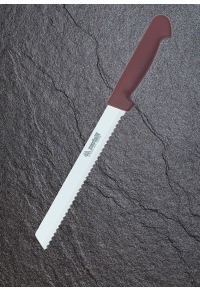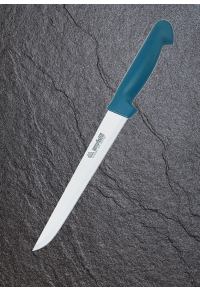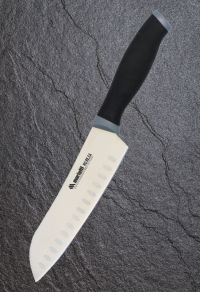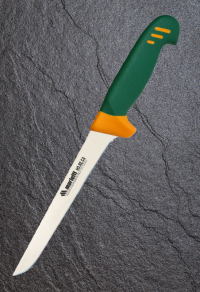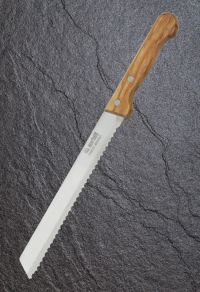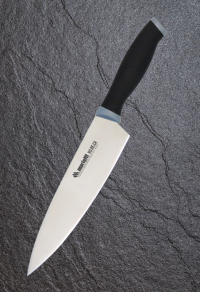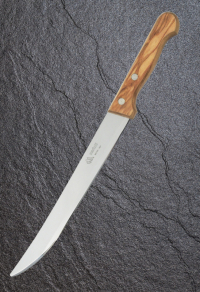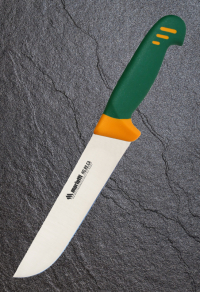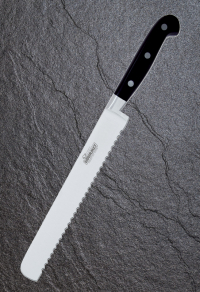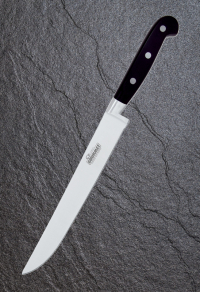Home
Subcategories
-
copy of Knife CUCINA -...
Together with the knife for vegetables it is probably the most used, as it can be used on a wide variety of foods and for a long series of operations. For example, it is able to chop, chop, reduce into cubes and slice meat, fish and vegetables.
-
copy of Knife DISOSSO -...
In the kitchen we often find ourselves working cuts of meat of different sizes and we need to separate the bones from the meat. DEBONING knives cater to this need: they can have a STRAIGHT or slightly CURVED blade to absorb the different types of cuts and shapes of the animals, making the preparation of the meat easier.
-
copy of Knife PANE - cod....
Slicing bread precisely and serving beautiful slices is a daily action. In addition, cakes, casseroles, roulades and other savory or cheesy preparations require a precise cut without having to pressurize the food, and this blade facilitates cutting.The tip is not needed and the blade must be wavy so as to incise the crust slowly without breaking it.
-
copy of Knife ARROSTO -...
They are knives with a blade geometry designed to offer the least resistance when cutting the food. SPINE and EDGE of the blade, generally "run" in parallel way just for this reason. Extremely sharp and with a tip pointing upwards to facilitate cutting the slices. Blade length between 20 and 30 centimeters.
-
Knife SANTOKU 1235TP
A Santoku has a blade quite similar to a carving knife and is the Japanese equivalent of a chef's knife. Since it is a good idea to have a knife (and a cutting board) for raw food and a knife (and a cutting board) for cooked foods, the second carving knife can be a Santoku so you have the chance to try this type of blade too. The big difference between the two blades is that the carving knife is designed so that the tip always remains in contact with the cutting board, while the Santoku is used as a small cleaver and the tip always comes off the cutting board.
-
Knife DISOSSO 18 BON18
In the kitchen we often find ourselves working cuts of meat of different sizes and we need to separate the bones from the meat. DEBONING knives cater to this need: they can have a STRAIGHT or slightly CURVED blade to absorb the different types of cuts and shapes of the animals, making the preparation of the meat easier.
-
Knife PANE
Slicing bread precisely and serving beautiful slices is a daily action. In addition, cakes, casseroles, roulades and other savory or cheesy preparations require a precise cut without having to pressurize the food, and this blade facilitates cutting.The tip is not needed and the blade must be wavy so as to incise the crust slowly without breaking it. -
Knife CUCINA 1233TP
In the kitchen we often find ourselves working cuts of meat of different sizes and we need to separate the bones from the meat. DEBONING knives cater to this need: they can have a STRAIGHT or slightly CURVED blade to absorb the different types of cuts and shapes of the animals, making the preparation of the meat easier.
-
Knife ARROSTO
They are knives with a blade geometry designed to offer the least resistance when cutting the food. SPINE and EDGE of the blade, generally "run" in parallel way just for this reason. Extremely sharp and with a tip pointing upwards to facilitate cutting the slices. Blade length between 20 and 30 centimeters. -
Knife FRANCESE 18 BUT18
Knife with a large and heavy blade, generally having a length between 15 and 30 cm with a specific curvature - near the tip - that allows precise cuts to be obtained. Used to cut all types of red meat. -
Knife PANE - cod. 2012
Slicing bread precisely and serving beautiful slices is a daily action. In addition, cakes, casseroles, roulades and other savory or cheesy preparations require a precise cut without having to pressurize the food, and this blade facilitates cutting.The tip is not needed and the blade must be wavy so as to incise the crust slowly without breaking it. -
Knife ARROSTO - cod. 2011
They are knives with a blade geometry designed to offer the least resistance when cutting the food. SPINE and EDGE of the blade, generally "run" in parallel way just for this reason. Extremely sharp and with a tip pointing upwards to facilitate cutting the slices. Blade length between 20 and 30 centimeters.


